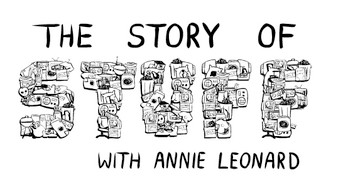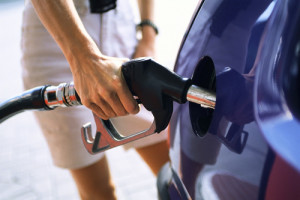Archive for June, 2008
Organizing a LARGE amount of TrueType fonts on Linux

Over the last decade or more, I’ve been doing graphic design for friends, family, clients and other people personally and professionally. In that time, I’ve been asked to match this font face or that font in a photograph. In that time, I’ve amassed a HUGE collection of fonts that allows me to do that; 19,980 fonts to be exact in my current collection.
There’s a great tool on the web called “What the Font?” that I often use for exactly this purpose. What you do is upload a piece of your graphic that includes the font you want to identify and their application asks you some basic questions (“Is this an ‘r’? Does your ‘a’ look like this? or this?”), and then it tells you which font is most-likely being used in that image/graphic. It’s an absolutely invaluable tool when you’re trying to match existing fonts for a piece of work you didn’t create.
When I make graphics with my tools (gimp, Adobe Creative Suite 3 (CS3), ufraw, etc.), I embed the name of the font I used in the comment meta data of the graphic file itself, so if I go back 6 months or a year later, I can figure out exactly what font I used when I created it.
But 19,980 fonts is LOT of fonts to go through and keep organized. I generally keep these stashed away in $HOME/.fonts/ so I can use them in my normal applications on my Linux machine and so they’re backed up with $HOME during the normal backup intervals. They are all sitting in one big directory so fontconfig and Xorg can use them.
But to use these with any sort of graphic editor (such as the gimp) takes forever to process them at load time. I needed to make that more manageable and speed things up.
Enter a quick bash hack:
cd ~/.fonts/
shopt -s nocaseglob
for font in {a..z}; do rsync -avP ${font}*ttf ${font}; done;What this does is go through all of my fonts in $HOME/.fonts/ and put them into a directory beginning with the first letter of the font name. All fonts that begin with ‘A’ or ‘a’ are now in ~/.fonts/a/ and so on. Much cleaner and easier to organize. it also makes it easier to pack up these files into a .zip or .7z archive for later use.
John McCain Robs More of Our Freedom With His Indecisiveness
We thought Bush was a major flip-flopper, but John McCain is proving to be even worse!

At hand (and close to my personal privacy heart) is the Hoyer Fisa bill which would grant retroactive immunity to the telecommunications companies who are guilty of unlawfully wiretapping millions of innocent United States citizens for the last several years.
The bill cleared the House by 293 to 129, with near-unanimous support from Republicans and substantial backing from Democrats. It now goes to the Senate, which is expected to pass it next week by a wide margin. Here’s the state-by-state breakdown of that voting:

At least my state representatives saw fit to vote against this measure, though they were in the minority overall. Only only vote in CT for the measure was from Republican Christopher Shays. The other votes were all against the measure, and all from Democrats.
Against:
CT-1 – John Larson [D], CT-2 – Joe Courtney [D], CT-3 – Rosa DeLauro [D], CT-5 – Christopher Murphy [D]
For: CT-4 – Christopher Shays [R]
Representative John Boehner of Ohio, the Republican minority leader had this to say on the matter.
“Our intelligence officials must have the ability to monitor terrorists suspected of plotting to kill Americans and to safeguard our national security…” […] “This bill gives it to them.”
But apparently the candidate for the Republican nomination for President, John McCain has said:
“…we shouldn’t grant immunity to the telecommunications industry”
No, wait, I mean..
“we should grant immunity to the telecommunications companies”..
But..
No, wait… on second thought,
He flips. He flops. He flips. He flops. It’s like a Fisher Price children’s toy. He can’t make up his mind at all or stick to his position. What an invertebrate. There’s an even scarier example of his flip-flopping that might open your eyes even wider.
Do you really want this person at the helm, guiding this country through the next 4 years, with all of the complicated and blended political, moral, social and economic issues facing the world?
Here is a brief video of Dennis Kucinich arguing against changes to FISA…
This is proving to be a very interesting debate indeed.
At least the Democratic nominee Barack Obama has publically stated there is “little doubt” that the Bush Administration, with the cooperation of major telecommunications companies…
“has abused [its] authority and undermined the Constitution by intercepting the communications of innocent Americans without their knowledge or the required court orders.”
“Given the legitimate threats we face, providing effective intelligence collection tools with appropriate safeguards is too important to delay. So I support the compromise, but do so with a firm pledge that as president, I will carefully monitor the program.”
“[The bill] does, however, grant retroactive immunity, and I will work in the Senate to remove this provision so that we can seek full accountability for past offenses.”
“Freedom is a muscle. It only gets stronger the more you use it.”
Let’s start using it!
The Decline of Democracy in 2008 and Beyond

Cyanide & Happiness @ Explosm.net
Don’t stand by and do nothing this year. Do something to change the future for ourselves and for our children.
HOWTO get YouTube video content onto your Apple iPod
Tags: Apple, iPod, Python, video, YouTubeI’m sure you’ve heard of YouTube by now.
YouTube is a video sharing website where users can upload, view and share video clips with other visitors to the site. YouTube was created in mid-February 2005 by three former PayPal employees.
The San Bruno-based service uses Adobe Flash technology to display a wide variety of user-generated video content, including movie clips, TV clips and music videos, as well as amateur content such as video blogging and short original videos. In October 2006, Google Inc. announced that it had reached a deal to acquire the company for US$1.65 billion in Google stock.
In August 2006, The Wall Street Journal published an article revealing that YouTube was hosting about 6.1 million videos (requiring about 45 terabytes of storage space), and had about 500,000 user accounts.
A YouTube search done today reveals more than 83 million videos and many millions of user channels. In fact, there are so many, YouTube no longer lists how many and restricts all searches to only 1,000 results or less.
Not bad for a company that is completely unprofitable and whose revenues being noted as “immaterial” by Google in a regulatory filing. The bandwidth costs to operate YouTube alone are estimated at approximately $1 million a day.
But enough about the numbers and dollars, let’s talk about how to get that content onto your Apple iPod video device!
I find myself with lots of “spare time” around my commutes, waiting for trains, driving, late at night while I turn off my brain and relax and many other places. I’ve collected lots of audiobooks, music streams and videos that I watch and discard from my ipod on a regular basis. A lot of the video content I watch now comes directly from YouTube.
The first thing you’re going to need is a copy of YouTube Downloader. This is a very simple Python script that takes a YouTube URL as input and will download and copy the file to your local system.
There are versions of youtube-dl available to all of the current Linux distributions if you simply install it with your normal packaging tools (yum, aptitude, synaptic, etc.), as well as a detailed guide to installing YouTube Downloader under Windows XP for those stuck on that legacy platform.
That’s step one.
The second step is to grab a current copy of the ffmpeg Video Encoder. Your Linux distribution may have this already, but if not, you can just download the latest source with SVN or Git and build it yourself.
For Windows users, you can either download a compiled version (you’ll need a copy of 7-zip to unpack it), or follow this HOWTO and build your own on Windows from source.
If you’re building this on Linux or Windows, make sure you include libfaac support in your build. This is critical, because iTunes won’t accept the format if it isn’t in MPEG-4 format (or AVI, but AVI files are enormous).
At the very least, use the following options when building ffmpeg from source:
./configure --prefix=/usr --enable-gpl --enable-pthreads
--enable-libvorbis --enable-libtheora
--enable-libgsm --enable-libfaac --enable-libfaad
--enable-liba52 --enable-shared --enable-libschroedinger
--enable-libx264
If you got it right, you should see something similar to the following:
install prefix /usr C compiler gcc .align is power-of-two no ARCH x86_64 (generic) big-endian no MMX enabled yes CMOV enabled no CMOV is fast no EBX available yes EBP available yes gprof enabled no debug symbols yes strip symbols yes optimizations yes static yes shared yes postprocessing support no software scaler enabled no new filter support no filters using lavformat no video hooking yes Imlib2 support no FreeType support yes network support yes IPv6 support yes threading support pthreads SDL support yes Sun medialib support no AVISynth enabled no liba52 support yes liba52 dlopened no libamr-nb support no libamr-wb support no libdc1394 support no libdirac enabled no libfaac enabled yes <--- This is what you want to see libfaad enabled yes libfaad dlopened no libgsm enabled yes libmp3lame enabled no libnut enabled no libschroedinger enabled yes libtheora enabled yes libvorbis enabled yes libx264 enabled yes libxvid enabled no zlib enabled yes bzlib enabled yes
Build it and install it. Now you should have a working ffmpeg encoder.
The third step is to encode the video and lastly, sync it to your iPod.
In this process, I'm going to use the example of "Groovy Dancing Girl" starring "Sophie Merry" from Ireland. She created an Internet sensation with her YouTube video, but now she's become quite famous as a new face on Etam's product lines.
This was a short-enough video to use as an example, but in practice, I'm normally converting 1-2 hour videos found on YouTube for watching on my iPod. Inbox Zero with Merlin Mann is a good example of just such a video.
Let's put all the steps together:
- Download the video using youtube-dl. We're going to pass it the
-l(that's an 'ell', not a 'one') option so we save the video itself with the original title as it appeared on the upstream YouTube URL.
$ /usr/bin/youtube-dl -l http://www.youtube.com/watch?v=Sr2JneittqQ Retrieving video webpage... done. Extracting video title... done. Extracting URL "t" parameter... done. Requesting video file... done. Video data found at http://208.117.254.159/get_video?video_id=Sr2JneittqQ&origin=sjc-v78.sjc.youtube.com &signature=7324C862B157C2C77781B15449C09F83FEBDAC71.89013B87A16736E75BB13B354 A03F528D0CEABFC&ip=65.172.152.98&ipbits=16&expire=1213949408&key=yt1&sver=2 Retrieving video data: 100.0% ( 8.81M of 8.81M) at 85.50k/s ETA 00:00 done. Video data saved to Groovy Dancing Girl-Sr2JneittqQ.flv
- Encode the video using the ffmpeg you just built above:
$ ffmpeg -i Groovy\ Dancing\ Girl-Sr2JneittqQ.flv -threads 4 -b 604k -ac 1 -ab 256k -ar 44100 -vol 500 Groovy\ Dancing\ Girl.mp4 FFmpeg version SVN-r13835, Copyright (c) 2000-2008 Fabrice Bellard, et al. libavutil version: 49.7.0 libavcodec version: 51.57.2 libavformat version: 52.16.0 libavdevice version: 52.0.0 built on Jun 19 2008 22:21:44, gcc: 4.2.3 (Ubuntu 4.2.3-2ubuntu7) Seems stream 0 codec frame rate differs from container frame rate: 1000.00 (1000/1) -> 29.92 (359/12) Input #0, flv, from 'Groovy Dancing Girl-Sr2JneittqQ.flv': Duration: 00:03:42.35, start: 0.000000, bitrate: 56 kb/s Stream #0.0: Video: flv, yuv420p, 320x240, 29.92 tb(r) Stream #0.1: Audio: mp3, 22050 Hz, mono, 56 kb/s Output #0, mp4, to 'Groovy Dancing Girl.mp4': Stream #0.0: Video: mpeg4, yuv420p, 320x240, q=2-31, 604 kb/s, 29.92 tb(c) Stream #0.1: Audio: libfaac, 44100 Hz, mono, 256 kb/s Stream mapping: Stream #0.0 -> #0.0 Stream #0.1 -> #0.1 Press [q] to stop encoding frame= 6654 fps=571 q=2.0 Lsize= 18676kB time=221.63 bitrate= 690.3kbits/s video:16489kB audio:2055kB global headers:0kB muxing overhead 0.708581%This will give you a video called "
Groovy Dancing Girl.mp4", which is of type:VIDEO: [mp4v] 320x240 24bpp 29.917 fps
- Now drag this .mp4 video directly onto your iTunes application window to add it to your Video library, and iTunes will sync it to your iPod the next time you connect. Voila!
If you're solely a Linux user, you can use Songbird (a Mozilla project), or install Amarok (my personal favorite, absolutely blows away iTunes in features).
If you have any questions, contact me or leave your comments here and I'll do my best to help you out.
Good luck!
BUY! BUY! BUY! Can we possibly consume even more?
I find myself growing ever more disgusted with the amount of garbage offered to us as “products” in the stores, on the shelves and as services in exchange for our hard-earned money. People have become voracious consumers. We’re no longer customers of products, we “consume”, like a thirsty cancer slowly consuming its host.
We don’t need as much “stuff” as we have, but our corporate overlords have force-fed us enough propaganda in television commercials, banner advertisements, newspaper and radio spots to lead us to believe we do. “That $499 iPhone you just bought last year? Why not throw that away and upgrade to the NEW iPhone 2.0 this year for a mere $299.00!”
Why? Why do we need to constantly upgrade things we already have, every 6 months or less?
I stumbled upon a site called “Story of Stuff” featuring stories and information by Annie Leonard which has a downloadable movie detailing how our society, our way of life in a linear path on a planet of finite resources, is running full-speed down a dead-end route.

One quote that jumped out at me was from retailing analyst Victor Lebeau, who helped shape our economy in the years after WWII:
“Our enormously productive economy… demands that we make consumption our way of life, that we convert the buying and use of goods into rituals, that we seek our spiritual satisfaction, our ego satisfaction, in consumption… We need things consumed, burned up, replaced and discarded at an ever-accelerating rate.”
Annie goes on to explain that 99% of the products we mine, process, buy and “consume” are thrown away into the trash in 6 months or less. Only 1% of our purchases actually survive more than 6 months. 1%!!!.
Here are three teaser videos from the site:
Here, Annie actually explains “Planned Obsolescence” better than I tried to do in a previous post:
I strongly recommend watching the full movie, if you’re at all concerned about how poorly our society is (mis)managing its resources.
What is the MOST money you’ll pay for the absolute LEAST quality?
A serious question: “What is the absolute MOST you’re willing to pay for the absolute LEAST quality”?
95% of the time, I fill up my gas tank at the same gas station with the same amount of gas at regular intervals. My driving patterns are fairly static and generally border my commute routes to/from work and to/from friend’s houses or soirées.
The gas prices have risen $1.00 in the last 2 months (a 33% increase, to $4.43/gallon). I normally get about 20-25mpg out of my truck’s engine on my short commutes and I make sure to put fuel-injector cleaner and other cleansers in the right fluids to make sure things remain clean and efficiently firing.
The interesting sidebar here is that diesel fuel which is typically a LOT cheaper than normal fuel, is now 30% higher than regular gas. Diesel gas here is over $5.10/gallon. Why? It is cheaper to produce, it is used much less than normal fuels and produces higher mileage than normal fuel.
Diesel fuel is more expensive because the energy industry doesn’t WANT you to switch to a diesel engine, easing your own migration to bio-diesel fuels when they become viable. They want you to continue to burn fuel at an ever-increasing rate, so they can pile the cash higher and deeper in their coffers. They figure they’re losing cash to people switching to diesel engines, so they dramatically increase the cost of diesel fuels as a result. Either people will switch back to “normal” engines, or they’ll make their profit on the increased pricing of diesel fuels.
Lovely.
Once gas went over $4.00 (it is now $4.43/gallon at my local gas station), I noticed a consistent, regular drop in my miles-per-gallon. I’m getting 8-10 mpg less per-gallon than I was before, presumably with the same gas and the same exact routes, mileage and driving patterns.
Something changed in the actual formulation of the gas that I regularly buy that decreased my mileage that dropped its efficiency by 40%. My truck has been through proper, thorough tuneups at every interval and continues to run at top-notch, except this…
I asked the gas attendant one day and they said they’ve been required to purchase a gasoline-ethanol blend of fuels now because of the rising cost of petroleum. Not only does ethanol in gas neutralize the effects of fuel-injector cleaners and gas additives, but it dramatically decreases mileage by evaporating up to 40% of its weight in water.
So because the gas stations need to continue to make increasing profits, they charge more for gas, and are buying cheaper, sub-par fuels, which delivers LESS miles-per-gallon than before. How exactly is this helping the problem? We’re actually using MORE gas than before, to travel the same distances.
There are some other ways to help increase gas mileage in your vehicle, to try to compensate the highway robbery the energy industry is pushing down on us.
As someone who drives a fairly large Chevy Avalanche Sports Utility Truck (SUT), I am often asked how I can choose to “destroy the environment” so much with my vehicle. Not only did my truck come from California where the fuel standards are much stricter than Connecticut, but my truck runs VERY efficiently, and I take a lot of precautions to ensure that I’m not abusing the environment with it. See my Fuel Efficiency Tips page for dozens of tips on how I accomplish great fuel economy with this vehicle.
But this problem is not exclusive to fuels… it is happening all over the world in dozens of industries. The recent earthquake in China resulted in hundreds of devastated buildings which were built out of concrete that was sub-par. You could literally crumble the concrete in your hands like sand. The building contractors cut corners to make more money by building them out of inferior materials. These inferior materials cost thousands of lives.
Technology products are being designed with “planned obsolescence” as well. I was recently loaned a Bluetrek ST1 stereo headset from a friend to try out. Page 4 of the instruction manual for this headset specifically says:
To maximize battery lifetime, it is recommended that you charge your headset to full capacity only when the battery is low, as it has a lifetime of about 500 charging cycles.
It goes on to say:
Do not let the battery charger remain plugged in the headset more than 24h
It doesn’t state why you shouldn’t let it remain plugged in, just that you shouldn’t. Perhaps this reduces the charging lifespan of the headset too? Who knows!
For a heavy headset user like myself, this headset would last roughly 6 months. A $75.00 product should last a LOT longer than that.
I have a Samsung WEP410 headset that I’ve used VERY heavily for a couple of years and it still has amazing battery life. It has been charged well over 1,000 times and is still going strong. I’ve recently replaced that with a Aliph Jawbone II headset to test out some advanced noise cancelling, but the Samsung is still my backup headset when I need it in a pinch.
The battery in the Samsung headset is probably the size of one knuckle of my pinky finger, while the battery in the Bluetrek is about the size of a cigarette lighter. How can such a large battery have such horrible recharge lifetime?
Planned obsolescence.
I had a printer that I purchased several years ago, an HP 2510 “AIO” (All-In-One”) printer, scanner, fax machine, card-reader, etc. It had some platen problems (as most scanners eventually do), and I called tech-support for their help and assistance.
The non-English speaking technical support representative for HP actually suggested that it would be cheaper if I just throw the printer away and bought a new one, instead of sending it back to HP for repair or replacement. A $300 printer with a manufacturer’s defect, still within the warranted period.
What is it with these companies who produce absolute garbage products, charge a premium for them, and over time degrade their quality even more, while still increasing the price they charge for them?
Products should be getting better and cheaper, not worse and more expensive. Hardware should not “expire” like this, in such a short amount of time. Would you accept a blender or microwave that just “expired” after 6 months of use? I surely wouldn’t. Why do we accept it with technology and fuels?
Vote with your wallet:
Stay away from HP products.
Stay away from Bluetrek products.
Reduce your reliance on fossil fuels.
Keep your hard-earned money and reserve it for vendors and companies who actually produce quality and price it accordingly.
Useful Tips for Dramatically Increasing Your Fuel Efficiency

With the price of gas hovering just under $4.50/gallon for 87 octane here in Connecticut, I decided to start compiling a list of the tips I’ve been using to increase my fuel efficiency in my vehicle (a 2003 Chevrolet Avalanche SUT) that I hope others can benefit from as well.
- Check your tire pressure at least once a month. Many drivers can improve their gas mileage by up to 3% by keeping their vehicle’s tires properly inflated. The correct tire pressure is critical for good fuel economy, maximum tire life and proper vehicle handling performance. The recommended pressure number for your vehicle is located on a sticker inside the driver side door or in the owner’s manual, not the maximum inflation pressure stamped on the tire.
To help consumers maximize their fuel economy and also improve their tires’ performance and efficiency, Goodyear offers its National “Free Air” Campaign. Motorists can have their tires inspected and the air pressure checked and corrected for free at any of the Goodyear-owned and participating independent dealer locations across the country, regardless of brand of tire or where they were bought.
-
Another big waster, related to improper tire inflation pressure.. is incorrect wheel alignment which can increase rolling resistance. This is like driving with the parking brake not fully released, it can cost a mile or two per gallon on a car that normally delivers 20 miles per gallon.
-
Check that your air filter isn’t clogged. Replacing a clogged air filter can improve a car’s gas mileage by as much as 10% Replacing a dirty air filter won’t just save you money; it will also help protect your engine by keeping harmful impurities out.
-
As you prepare to pack the car for your vacations or long commutes, remember not to overload your car. Check the owner’s manual for the maximum recommended load for the vehicle. An extra 100 pounds in the trunk reduces a typical car’s fuel economy by 1-2 percent. Also don’t forget to unpack that trunk when you’re doing traveling. Take the set of golf clubs out, the tools, the clothes and any other heavy junk that is in the trunk that you’re not using on a daily basis.
-
Use the proper grade of motor oil in your vehicle as recommended by the vehicle manufacturer. The proper grade of motor oil can improve your gas mileage by 1-2%. Switching to a synthetic or standard oil treated with a friction reducing oil additive has been shown to improve fuel economy by as much as 12%.
-
Make sure your gas cap is on tight and is not damaged in any way. Approximately 17% of the vehicles on U.S. highways have either misused or missing gas caps, causing 147,000,000 gallons of gas per year to vaporize into the atmosphere. (Source: September 2004 Service Tech Magazine).
With the rising price of gas, a locking gas cap is an essential item to have. A locking gas cap ensures that your precious fuel is not being stolen at while your car lies idle at night or in a parking lot unattended. A locking gas cap can dramatically reduce or deter theft and vandalism.
-
Run your car’s air conditioner less if you’re traveling under 30mph. It is better to keep the windows rolled down at lower speed than to run the A/C full-blast. Contrary to the popular myth, if you’re traveling over 40mph, turning the air conditioner on will NOT consume more fuel… HOWEVER, keeping your windows rolled down at these higher speeds definitely will because your car is no longer aerodynamic or wind-resistant.
-
Drive calmly. Avoid quick or “jackrabbit” starts and stops at traffic signals and turns. Aggressive driving wastes gas and can reduce your gas mileage by 33% on the highway and 5% in the city. Don’t forget to observe the posted speed limit; gas mileage decreases rapidly above 60 miles per hour and the last thing you want on top of paying more for gas, is paying more for a speeding ticket.
-
Don’t let your car idle longer than necessary. It’s more efficient to turn off most gasoline engines than to have them idle any longer than 30 seconds. If you’re going through the drive-thru at your local fast food joint or for the morning coffee, it is better to park and go inside than to idle your way through the drive-thru line, moving one car length ahead every minute or so.
Not only is going inside better for your car, it’s better for you because you get some exercise, fresh air and vitamin D on your skin from the sun.
-
This one may not seem obvious, but use your cruise control whenever possible. This is the most-efficient way to maintain proper speeds versus the constant variability of a foot on a gas pedal.
-
An engine runs most inefficiently when it is cold. It not only uses more fuel when run cold, but creates the most exhaust emissions and suffers the most wear and tear. To maintain peak engine efficiency, try to avoid many short, separate trips, and unnecessary cold starts, by combining as many errands as possible into one trip as possible.
-
Plan more efficient routes if you drive in traffic. If you’re not sure where your destination is, map it out on a GPS or print the directions using Google Maps or Yahoo! Maps.
-
The fuel consumption that’s posted on new-car window stickers is based on a well-tuned and properly maintained vehicle. Running a car in sub par mechanical condition can dramatically lower that figure. A poorly maintained engine can cut mileage by 10-20%. A clogged air filter alone can cause up to a 10% increase in fuel consumption. Be sure to follow the maintenance schedule in your owner’s manual, and act promptly if you sense any unusual sounds, smells, or vibrations.
Your maintenance should include a check of the proper gap on your spark plugs, spark plug wires, distributor cap, air filter, fuel injectors and other components directly related to the firing of your engine and the fuel subsystem. Make sure you have these checked and serviced by a licensed, professional auto mechanic who is familiar with the make and model of your vehicle. Don’t just go to the local neighborhood mechanic without checking around first.
Depending on the kind of repair and how well it is performed, regular vehicle maintenance can improve gas mileage by an average of 4.1%.
Good luck!
The Theory of the Left Passing Lane, or the “Passing Lane Personality Complex”

I’ve been quietly noticing for several years that there is a repeatable behavior that happens when I’m driving down the road, in any vehicle, that causes people behind me to exhibit what I’m calling the “Passing Lane Personality Complex”.
It goes like this:
You’re happily driving down the road at a safe, comfortable speed, and hit a bit of right-lane congestion in your lane. You naturally pull into the left lane (the “passing lane”) to bypass the clog in the right lane. Others vehicles behind you do the same.
You could be doing 55mph, 65mph, 85mph or more when you pass these cars in the right lane, it doesn’t matter. The “Passing Lane Personality Complex” happens at any speed.
Once you pull back into your own spot in the right lane again, ahead of all of the congested cars in the right-lane behind you, WITHOUT FAIL the person who was driving behind you in their vehicle ABSOLUTELY MUST pass you at a speed greater than your speed.
You could be doing 100mph when you pull back into that right lane and the next person behind you could be 1/2 mile back, but they ABSOLUTELY MUST pass you at 110mph or more. And when they pass, they have to look at you with some sort of grin of accomplishment on their faces.
There is definitely some sort of consistent personality defect with drivers who do this. I’ve seen it thousands of times and it happens without fail, every single time.
Give it a try at any time on any road, and you’ll see what I mean.
Won’t Somebody Think of the Terrorists?
Another quote of the day… a follow-up to my previous post about the ridiculous security theater presented by the TSA.
“But governments need to overreact! If you don’t think of the children, the terrorists have won!”
“Ah but if you don’t think of the terrorists, the children have won!”
New TSA Screening Requirements Violate their Own Requirements

There seems to be a lot of “confusion” lately about what exactly the proper screening requirements are of TSA employees and the new regulations governing domestic flight and travel.
The TSA has announced new requirements that claim to be for “increased security”. The requirement goes on to say:
Beginning Saturday, June 21, 2008 passengers that willfully refuse to provide identification at security checkpoint will be denied access to the secure area of airports. This change will apply exclusively to individuals that simply refuse to provide any identification or assist transportation security officers in ascertaining their identity.
This new procedure will not affect passengers that may have misplaced, lost or otherwise do not have ID but are cooperative with officers. Cooperative passengers without ID may be subjected to additional screening protocols, including enhanced physical screening, enhanced carry-on and/or checked baggage screening, interviews with behavior detection or law enforcement officers and other measures.
Note my emphasis in the above quote. This reads that you are required to show identification when requested, but not if you have lost your ID and cooperate with officers.
So basically this has nothing at all to do with security. Let’s also not forget that the alleged 9/11 hijackers had valid, legally-issued credentials when they boarded those planes. They did so within perfectly legal guidelines, without violating any laws or regulations.
What would stop someone else from doing the same? Answer: NOTHING!
Incidentally, you can’t “show identification”, because “identification” is an act or process. Showing “credentials” would have been a proper way to express that… but perhaps these are more examples of “Doublespeak” from US.gov.
In his bestselling book Doublespeak, William Lutz notes that doublespeak is not an accident or a “slip of the tongue.” Instead, it is a deliberate, calculated misuse of language.
Lutz provides several defining attributes of doublespeak:
- misleads
- distorts reality
- pretends to communicate
- makes the bad seem good
- avoids or shifts responsibility
- makes the negative appear positive
- creates a false verbal map of the world
- limits, conceals, corrupts, and prevents thought
- makes the unpleasant appear attractive or tolerable
- creates incongruity between reality and what is said or not said
Sound familiar?
This is yet another example of “Security Theater” from a corrupt government that continues to propagate lies to uphold their agenda.
There is even one detailed account from travel author Edward Hasbrouck that explains how he was asked to present his ID from neither an airline representative or a member of the TSA, and nearly arrested for simply asking the question “Who are you?” to the person demanding he present his credentials.
In fact, the 9th Circuit Court of Appeals ruled that you don’t have to present ID if you are willing to subject yourself to a more-thorough search at the security checkpoint. This was part of the Gilmore v. Gonzales ruling.
But it seems that the TSA is going back on their own documented regulations, by making it a requirement to present photo ID when asked, even though you are legally not required to do so.
And lastly, does this banner, emblazened on many TSA webpages seem a bit ominous?
“Behavior Detection Officers are Looking Out for You”:

It seems almost… familiar.

Don’t they realize that the book 1984 by George Orwell almost 60 years ago was meant to be a warning, not a guidebook on how to run this country?
The TSA shouldn’t be allowed to use the eagle (representing freedom) and the stars and stripes (representing the sacrifice to achieve that freedom) in their logo.
